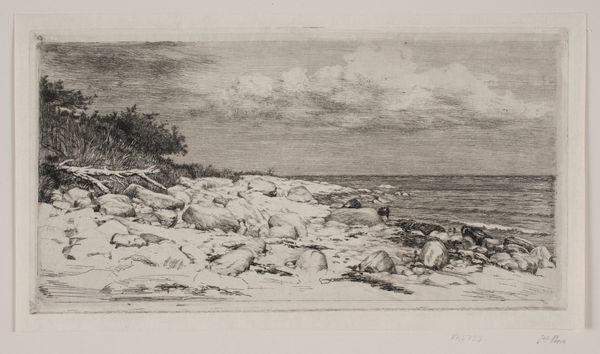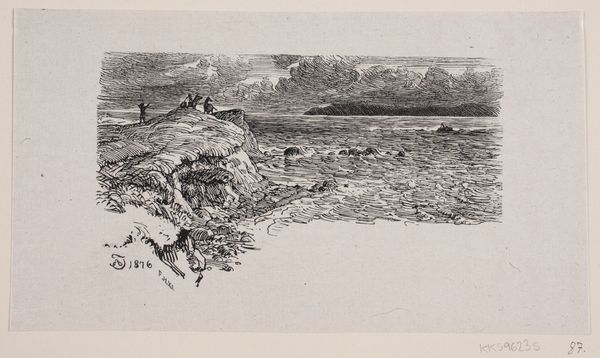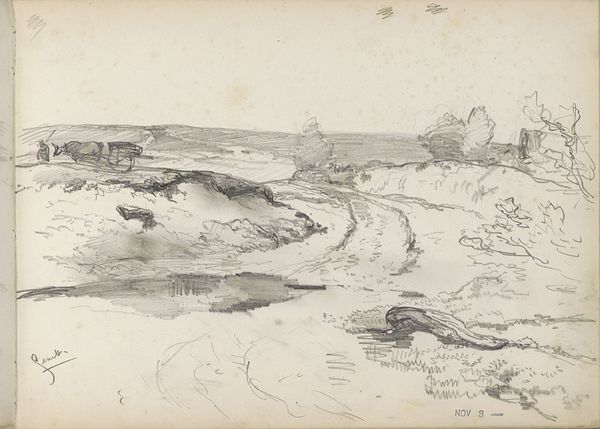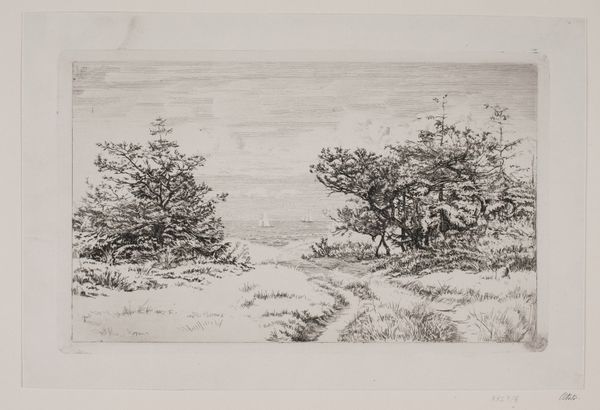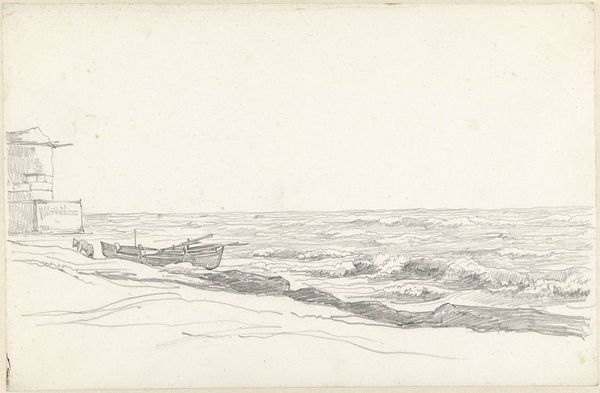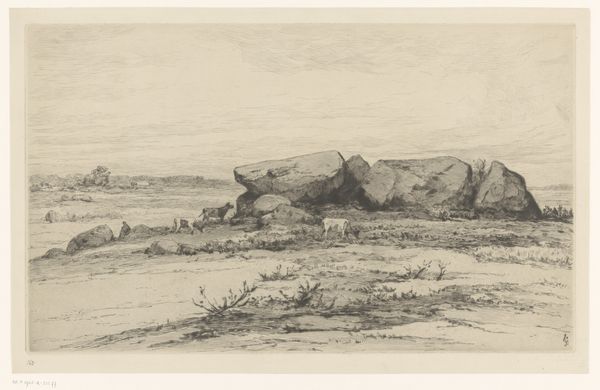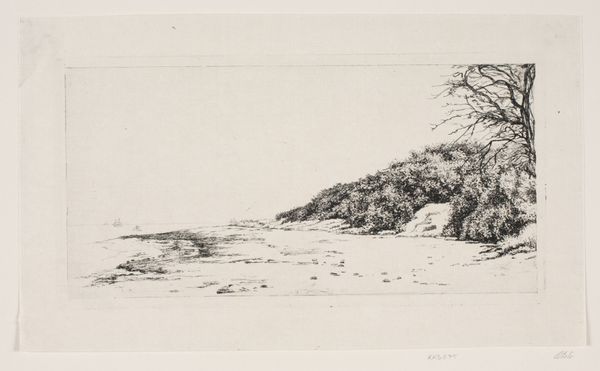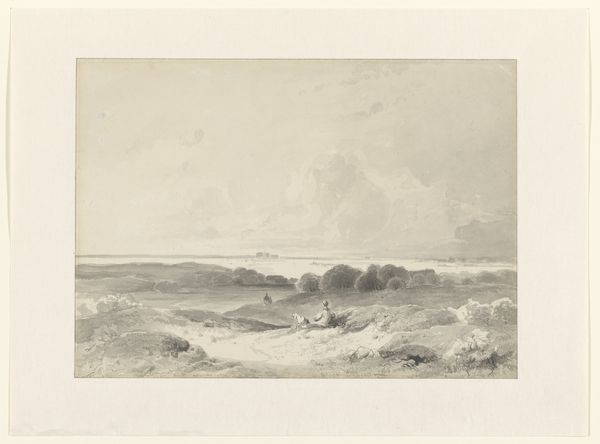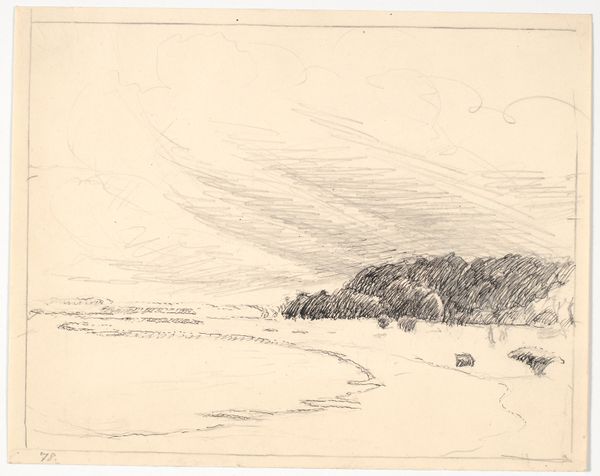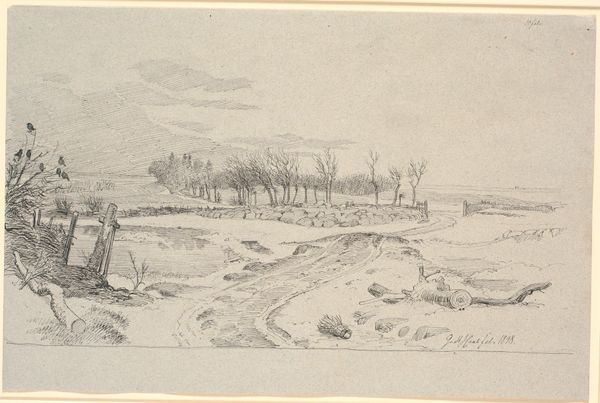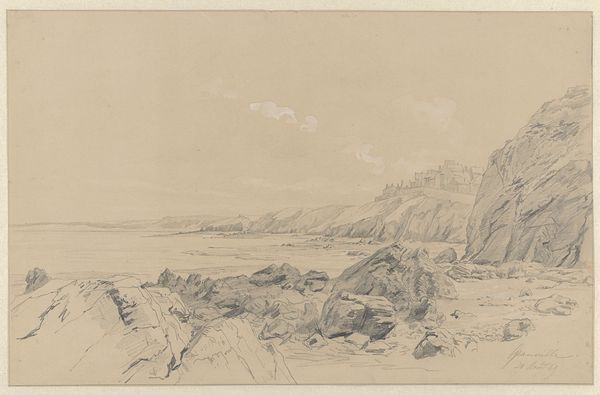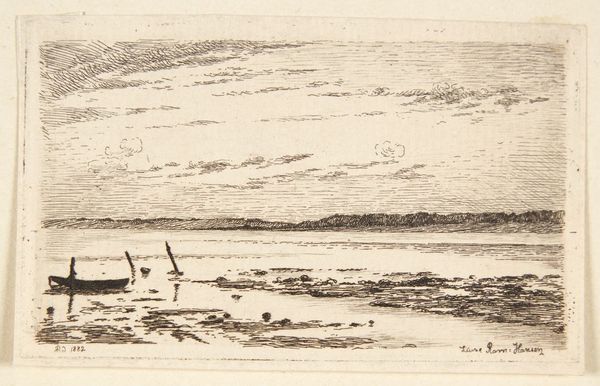
print, etching
# print
#
impressionism
#
etching
#
landscape
#
realism
Dimensions: 189 mm (height) x 321 mm (width) (bladmaal), 144 mm (height) x 278 mm (width) (plademaal)
Curator: Here we have Carl Bloch's "Stenet Strandbred," a compelling etching from 1889. What strikes you initially? Editor: A profound stillness. The monochromatic palette amplifies the desolate nature of this beach. It's a very isolated place rendered in delicate lines. Curator: Bloch captures the harsh yet captivating Danish coastline. I see the large boulders scattered across the shore; these are potent symbols of permanence. Editor: Definitely. And there's that sparse vegetation clinging to the edge. It reminds me of how marginalized communities stubbornly endure in the face of environmental challenges and limited resources. I wonder if it reflects societal peripheries. Curator: It is plausible, given how frequently landscape has historically functioned as a metaphor for social concerns. But the clouds, in their rendering, bear the most potent symbolic charge: promise. Are they heralding a coming tempest? Editor: Or the hope for one, perhaps? Consider the socioeconomic tensions brewing across Europe at the time. Art was intrinsically engaged in the socio-political changes as it began representing working-class life, questioning traditional power structures and contributing to discourse around labor rights and social inequalities. It may even represent an individual quest. Curator: Indeed. And Bloch, known for his religiously themed paintings, embraced landscape etching later in his career. An act of quiet rebellion or shifting emphasis in artistic expression? I feel he's returning to something fundamental here, moving toward observation, empiricism, perhaps. Editor: Or toward the personal, perhaps. The ocean also symbolizes movement. Here it suggests a space that can be traveled upon, that gives access to somewhere else: liberation, refuge. Curator: Viewing “Stenet Strandbred”, it provides an intersection between starkness and ethereal, which creates complex connotations in terms of history and art. Editor: True. We should continue to explore the artwork with that sensibility as we depart, thinking of what the painting tells us, about its place, and maybe something more profound.
Comments
No comments
Be the first to comment and join the conversation on the ultimate creative platform.
